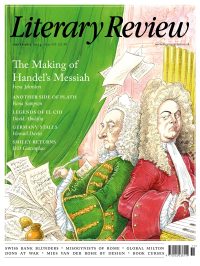Tim Hornyak
This Bird Has Flown
Character Limit: How Elon Musk Destroyed Twitter
By Kate Conger & Ryan Mac
Cornerstone Press 480pp £25
One of my journalism professors, a gruff newspaper editor named Klaus Pohle, once posed a question about mass media that is both critical and unresolvable: where does the public interest end and the private interest begin? At every privately owned news outlet there’s an inherent conflict between business priorities and the duty to inform the public without bias. Pohle posed the question a quarter of a century ago, in the age of print, radio and cable news networks, but it is just as relevant today, in the age of Twitter, one of the best sources of breaking news anywhere.
Launched by Jack Dorsey, Noah Glass, Biz Stone and Evan Williams in 2006, Twitter was an experiment in microblogging, as it used to be called, where users could tell everyone what was going on in 140 characters. As users quickly increased into the millions, it developed a staggering presence in the media sphere. It aspired to be a global town square of information and opinions and a pillar of democracy, not unlike the traditional press.
The reality was far different, as New York Times journalists Kate Conger and Ryan Mac tell us. While Twitter’s growth skyrocketed, engineers struggled with an ocean of hateful, violent and graphic content, as well as legions of bots. The San Francisco company began policing tweets more vigorously, flagging misinformation about

Sign Up to our newsletter
Receive free articles, highlights from the archive, news, details of prizes, and much more.@Lit_Review
Follow Literary Review on Twitter
Twitter Feed
The era of dollar dominance might be coming to an end. But if not the dollar, which currency will be the backbone of the global economic system?
@HowardJDavies weighs up the alternatives.
Howard Davies - Greenbacks Down, First Editions Up
Howard Davies: Greenbacks Down, First Editions Up - Our Dollar, Your Problem: An Insider’s View of Seven Turbulent...
literaryreview.co.uk
Johannes Gutenberg cut corners at every turn when putting together his bible. How, then, did his creation achieve such renown?
@JosephHone_ investigates.
Joseph Hone - Start the Presses!
Joseph Hone: Start the Presses! - Johannes Gutenberg: A Biography in Books by Eric Marshall White
literaryreview.co.uk
Convinced of her own brilliance, Gertrude Stein wished to be ‘as popular as Gilbert and Sullivan’ and laboured tirelessly to ensure that her celebrity would outlive her.
@sophieolive examines the real Stein.
Sophie Oliver - The Once & Future Genius
Sophie Oliver: The Once & Future Genius - Gertrude Stein: An Afterlife by Francesca Wade
literaryreview.co.uk